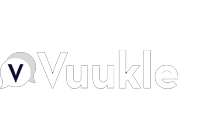We all know what it means to “read between the lines” in a figurative sense, but before we used modern technology to communicate with one another, people sometimes took it literally, such as by writing secret messages in invisible ink between the lines of a seemingly normal letter.
The technique, whereby the author of a message hides secret information inside something that looks innocent on the surface, is known as steganography, and it is almost as old as writing itself. Unlike cryptography, which scrambles the message to make it unreadable without the decryption key, the purpose of steganography is to conceal from prying eyes the very existence of the message. As with many other information-handling methods, steganography is now used in digital technologies, too.
A secret message can be hidden in almost any digital object, be it a text document, license key, or even file extension. For example, the editors of Genius.com, a website dedicated to analyzing tracks by rap artists, used two types of apostrophes in their online lyrics that, when combined, made the words “red handed” in Morse code, thereby protecting their unique content from being copied.
One of the most convenient “containers” for steganographers happens to be media files (images, audio, video, etc.). They are usually quite large to begin with, which allows the added extra to be meatier than in the case of, say, a text document.
Secret information can be written in the file metadata or directly in the main content. Let’s take an image as an example. From the computer’s point of view, it is a collection of hundreds of thousands of pixels. Each pixel has a “description” — information about its color.
For the RGB format, which is used in most color pictures, this description takes up 24 bits of memory. If just 1 to 3 bits in the description of some or even all pixels are taken up by secret information, the changes in the picture as a whole are not perceptible. And given the huge number of pixels in images, quite a lot of data can be written into them.
Read Complete Article: https://www.kaspersky.com/blog/digital-steganography/27474/





